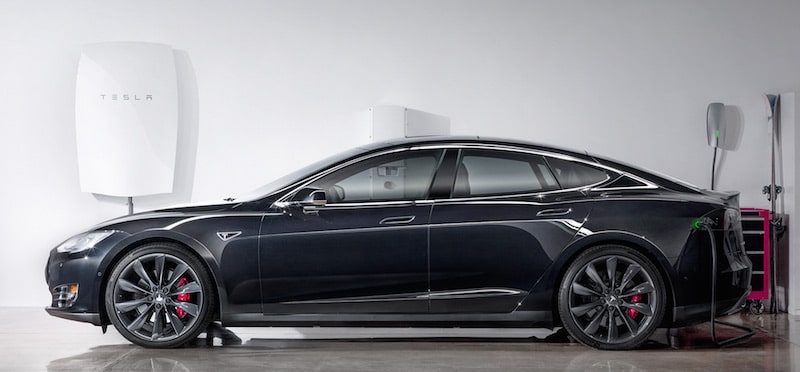Tesla CEO Elon Musk launched a new chapter for his company in a long awaited announcement on building-based energy storage late last week. The company officially released the Powerwall battery product, designed to store solar energy and potentially allow customers to be entirely grid independent.
"Our goal is to fundamentally change the way the world uses energy" said the company's founder, Musk, at a news conference on April 30th.

Tesla Powerwall is a rechargeable lithium-ion battery designed to store energy at a residential level for load shifting, backup power and self-consumption of solar power generation. Powerwall consists of Tesla’s lithium-ion battery pack, liquid thermal control system and software that receives dispatch commands from a solar inverter. The unit mounts on a wall and is integrated with the local grid to harness excess power and give customers the flexibility to draw energy from their own reserve.
Powerwall is available in 10kWh, optimised for backup applications or 7kWh optimised for daily use applications. Both can be connected with solar or grid and both can provide backup power. The 10kWh Powerwall is optimised to provide backup when the grid goes down. When paired with solar power, the 7kWh Powerwall can be used in daily cycling to extend the environmental and cost benefits of solar into the night when sunlight is unavailable. Powerwall is priced at $3500 for 10kWh and $3000 for 7kWh. However this price excludes inverter and installation cost, and it is estimated that the total installed cost would be in the region of $7000.
Although the exact technology involved in the battery is a closely guarded secret, it probably isn't based on revolutionary concepts, said Jordi Cabana, a chemistry professor at the University of Illinois at Chicago who studies new battery materials. "Just looking at the specs that they publicize, it doesn't look very different, in terms of the cost, to what they're putting in their cars".
[contact-form-7 id="3204" title="memoori-newsletter"]
Beyond the US, Germany is seen as a key market for the product - which is about 6 inches thick, 4 feet tall and 3 feet across - because it has among the highest take-up of solar energy in the world, Musk said.
Musk's ambitions with the battery are tremendous. He opened the press event by invoking climate change, and saying that it's "within the power of humanity" to change the way we produce and use power. He went on to say that he sees the Gigafactory under construction in Nevada as a product, the first of many. With 160 million Powerpacks, we could power the United States, he said, and with 2 billion, the world. The entire presentation and subsequent party, Musk said, was powered by stored solar energy.
Tesla's impact on the energy storage market will be closely watched in Brussels, where the European Commission called for an overhaul of Europe’s ageing electricity grid networks. Unveiling its Energy Union plans in February, the Commission said future grids "will take into account cross-border flows, variable renewable production, demand response and storage possibilities".
Energy storage research projects are eligible for financing under the EU's €80 billion Horizon 2020 research programme. Some are already being rolled out across Europe, one in Ireland catching media attention has the potential for unlimited storage capability use a motor-generated flywheel to harness kinetic energy.
Tesla’s Powerwall, and similar products, could also have huge implications for under-developed regions of the world, where power is often unreliable despite abundant solar energy. "This is going to be really great for the poorest communities in the world" he said, "this allows you to be completely off grid". Musk also compared the potential of this technology to that of the way mobile phone technology has expanded, calling it "analogous to the way mobile leap-frogged landlines".
He stressed however that moving advanced economies like America away from unsustainable fossil fuels was a key goal. "I think we should collectively do something about this... we have this handy fusion reactor in the sky, called the sun,".
Adoption in the US is predicted to boom. Google and Apple are reportedly already using Tesla battery backup systems at their headquarters, and Walmart is testing a Tesla battery at 11 retail stores in the US as well.
Despite the seemingly “ground-breaking” announcement there are very similar alternatives on the market, not least products from Samsung SDI, California based Enphase. Perhaps the biggest difference between these competitors and Musk’s Tesla Energy is marketing and PR, but in a technology space with a huge focus on market adoption that is an important and valid differentiation.



